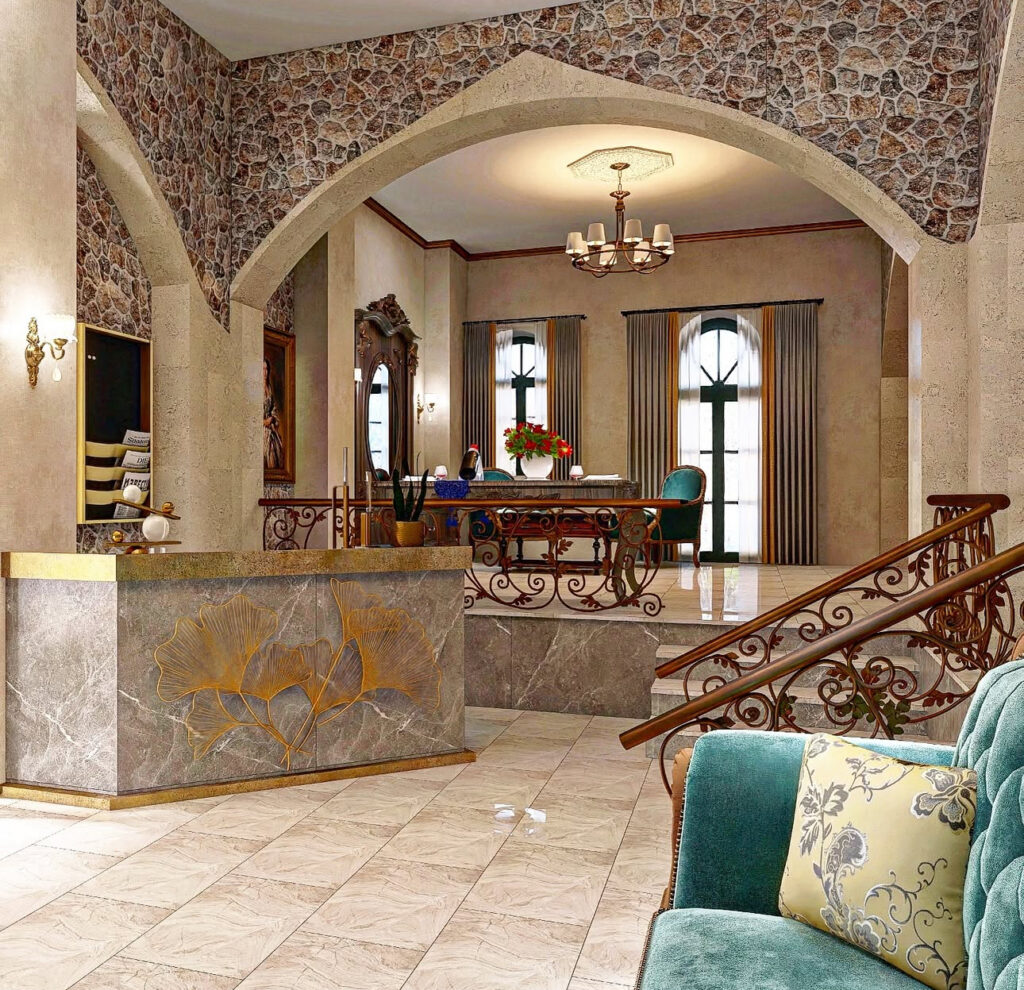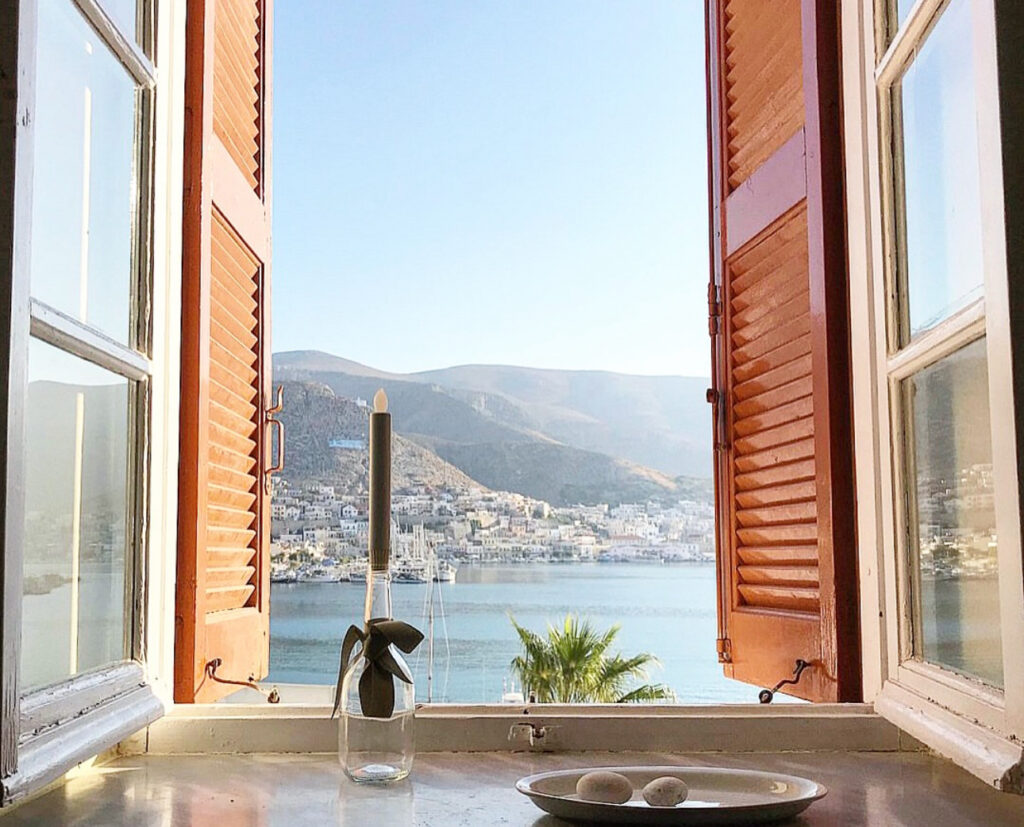
Kalymnos, an island in the Dodecanese, has a rich and turbulent history that is strongly reflected in its culture and architecture. In ancient times, it belonged to the region of Caria and is mentioned as early as the Homeric era. Its name is associated with the word “kallimnaos,” meaning “he who has a beautiful home.” Later “Kalyda” and today Kalymnos!
During the Hellenistic and Roman periods, the island continued to be inhabited, flourishing culturally and commercially. In the Byzantine era, it suffered many invasions, which affected the organization of the settlements (many were built in inaccessible locations).
From the 14th century onwards, Kalymnos experienced Venetian rule, Ottoman rule, Italian rule, and finally united with Greece in 1948.
The architecture of Kalymnos is a mosaic of cultural influences that have emerged from its historical course:
Traditional houses• Old Kalymnos houses are usually simple, with stone foundations and whitewashed walls.
• They have tiled roofs and simple decorative elements, with extensive use of natural light and adaptation to the island’s climate.
• Their interiors are often decorated with handmade wooden furniture, knitted items, and ceramics.
Settlements with a special character:
• Pothia (the capital): Built amphitheatrically around the port, it stands out for its 19th-century neoclassical mansions, built by wealthy sponge divers and merchants. This urban architecture has strong Italian and neoclassical elements.
• Chora Kalymnos: The former capital, built inland for protection from pirates. Here stands the Castle of the Knights, built by the Knights of St. John in the 15th century, with impressive medieval architecture.
• Vathi, Myrties, Masouri, Kantouni, Panormos, Kasteli: Seaside villages with low houses and more modern, tourist-oriented architecture that nevertheless retains its connection to tradition.
Ecclesiastical Architecture:
• Kalymnos has a large number of churches and monasteries. The Metropolitan Church of Christ the Savior in Pothia stands out with its blue dome and impressive marble by Georgios Vitalis from Tinos.
• The Monastery of Saint Savvas above Pothia, with its magnificent view and architecture that combines traditional island and monastic styles.


Italian architecture in Kalymnos is a special chapter in the island’s history and is one of the most recognizable traces of Italian occupation in the Dodecanese (1912–1943). Kalymnos, like the other islands of the Dodecanese, was under Italian administration, and this period left its mark on the urban and architectural fabric, especially in the port and public buildings.
Characteristics of Italian Architecture in Kalymnos:
1. Neoclassicism and eclecticism
The Italians adopted elements of neoclassicism and eclecticism in public buildings, seeking to convey a sense of “grandeur” and cultural superiority. Buildings such as schools, administrative buildings, and military installations have symmetrical facades, tiled roofs, and columns with ancient Greek references.
2. Harmony with the environment
Although this was a foreign aesthetic, the Italians took care to integrate their buildings into the local landscape, often using stone, whitewashed walls, and tiles so as not to alter the island’s identity.
3. Clean, geometric lines
Many Italian buildings are distinguished by their symmetry and austerity of design. The result is an elegant but austere volume, with obvious rhythms in the structure (horizontal/vertical lines, symmetrical windows, etc.).
4. Public buildings and infrastructure
The Italians built schools, hospitals, barracks, administrative buildings (such as the former Governor’s Office in Pothia), the Post Office, and other infrastructure in Kalymnos that are still in use today. These buildings stand out for their European architectural identity.
Iconic examples of Italian architecture in Kalymnos:
• The Government Building (Palazzo del Governo)
One of the most important buildings in the port of Pothia. It was built around 1930 and has obvious fascist architectural features: strict symmetry, an imposing entrance, and large proportions.
• The former Italian Hospital (now Health Center/Hospital)
A building with neoclassical and functional elements, reflecting the Italians’ concern for the island’s social infrastructure.
• The Old Port Authority and Customs House
Smaller buildings in the port, with Italian aesthetics that combine island austerity with the urban class of Italian colonial cities.
• The old school (Scuola Elementare Italiana)
The Italian elementary school that housed generations of students and is one of the best examples of public architecture.

Check-in is available from 2:00 PM, and check-out is by 11:00 AM. If you need to arrive earlier or leave later, please let us know in advance - we’ll do our best to accommodate your request, depending on availability.
Parturient ac nullam porta tincidunt mattis. Ornare lacinia facilisis interdum venenatis enim duis rutrum litora. Iaculis quis tortor nulla iaculis massa lectus ullamcorper.
Parturient ac nullam porta tincidunt mattis. Ornare lacinia facilisis interdum venenatis enim duis rutrum litora. Iaculis quis tortor nulla iaculis massa lectus ullamcorper.
Parturient ac nullam porta tincidunt mattis. Ornare lacinia facilisis interdum venenatis enim duis rutrum litora. Iaculis quis tortor nulla iaculis massa lectus ullamcorper.
Parturient ac nullam porta tincidunt mattis. Ornare lacinia facilisis interdum venenatis enim duis rutrum litora. Iaculis quis tortor nulla iaculis massa lectus ullamcorper.
Parturient ac nullam porta tincidunt mattis. Ornare lacinia facilisis interdum venenatis enim duis rutrum litora. Iaculis quis tortor nulla iaculis massa lectus ullamcorper.
Parturient ac nullam porta tincidunt mattis. Ornare lacinia facilisis interdum venenatis enim duis rutrum litora. Iaculis quis tortor nulla iaculis massa lectus ullamcorper.
Parturient ac nullam porta tincidunt mattis. Ornare lacinia facilisis interdum venenatis enim duis rutrum litora. Iaculis quis tortor nulla iaculis massa lectus ullamcorper.
info@archontikohotel.com
+30 2243029064